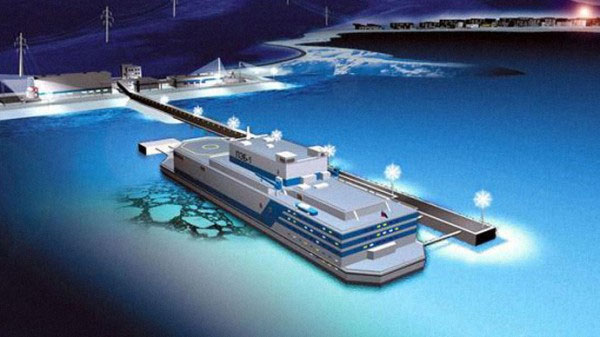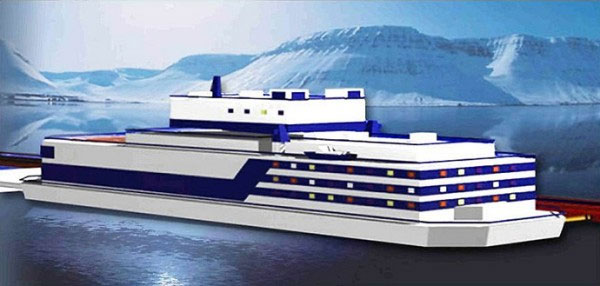The first floating nuclear power plant will operate in 2016
In the next three years, Russia will complete the construction of the world's first floating nuclear power plant, capable of providing energy and heat as well as drinking water for arid and harsh climates.
>>> Nuclear power plants float on water
These unique vessels will be launched in 2016, Baltic Plant General Manager - Russia's largest shipbuilding company, said Aleksandr Voznesensky to reporters at the International Naval Show (International Naval Show). ) for the 6th time in St Petersburg.
According to RT, this "floating" factory is located on the icebreaker Akademik Lomonosov produced by the Baltic Plant from 2007 to the present. This will also be the leading ship for a series of floating nuclear power plants that Russia wants to put into production in the near future.

Akademik Lomonosov will be tasked with powering large industrial corporations, port cities as well as offshore drilling platforms. The ship's nuclear plant has the same structure and operation as other normal plants, except that it is on a ship that can operate for more than 50 years in extremely harsh Arctic environments.
Ships can withstand storms, tsunamis, and will even work when colliding with other ships. The plant also does not release toxic substances during operation. The total tonnage of the ship is 21,500 tons with a crew of 69 people. The ship has no propulsion, so it will have to be towed to the desired location.
The manufacturer adds that each of these "floating" plants will be equipped with two modified KLT-40 reactors to provide 70MW of electricity or 300MW of heat, enough to supply a city of 200,000 people.
"Floating" nuclear power plants are expected to be used in remote mountainous areas in the north and the Far East of Russia, which is currently facing many difficulties in economic growth due to lack of energy.

The ships are also designed to desalinate seawater to produce 240,000 cubic meters of freshwater each day and provide water-scarce areas.
In addition to Russia's production to use in the far north to speed up economic growth in remote areas, such nuclear plants could also be exported. 15 countries, including China, Indonesia, Malaysia, Angola, Namibia and Argentina have expressed interest in the technology.
Russian producers in charge of the project emphasize that the enrichment of nuclear fuel on board fully complies with the regulations of the International Atomic Energy Agency (IAEA). After about 40 years of operation, the ship's reactor will be replaced, while the old one will be utilized at special facilities.
This is really a booming step of nuclear power technology, promising a bright future for people in extremely harsh climate areas.
- Nuclear power plant floating on water
- Russia tested floating nuclear power plant
- Russia's floating nuclear power plant is ready to conquer the Arctic
- China - Russia builds a floating nuclear power plant
- Successfully commissioned the world's first floating nuclear power plant
- Russia built the first floating nuclear power plant
- Russia built the world's first floating nuclear power plant
- He built the first new generation nuclear power plant
- It takes 40 years to close Japanese nuclear power plant
- Russia is committed to building safe nuclear power for Vietnam
- The idea of a nuclear plant at sea, withstand the tsunami
- Japan built a new nuclear power plant in Aomori
 Norway built the world's tallest wooden tower
Norway built the world's tallest wooden tower Kremlin
Kremlin Ashurbanipal: The oldest royal library in the world
Ashurbanipal: The oldest royal library in the world Decoding the thousand-year construction of Qin Shihuang shocked the world
Decoding the thousand-year construction of Qin Shihuang shocked the world